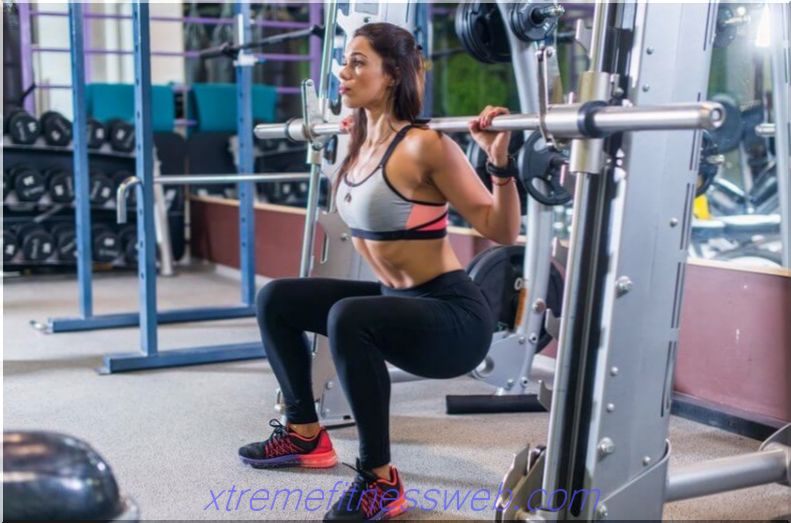
Lifting the body from a prone position is not lifting, but twisting. From the side it looks as if a person lifts the body, tears his shoulders off the floor, and therefore the exercise is called by first impression. In fact, the shoulders rise as the rectus abdominis contracts, and the lower ribs lead to the pelvic bones. Exercise is accessible to beginners and professionals, but its correct execution is a whole art.
Content
- 1 Press training
- 1.1 Why download it
- 1.2 When
- 1.3 How often to train the press
- 2 Lifting Options
- 2.1 Lifting the house on the floor
- 2.2 Options for the hall
- 3 What to look for
Abs training

In modern bodybuilding gloss, they often advocate refusing to train the press. Indeed, the rectus abdominis is loaded when we pull the deadlift, or squat, and stretch when we perform the technically correct bench press.
Now imagine a beginner. He crouches so far with a mop stick to develop a skill. It pulls it, for the sake of ideal angles. Shakes - an empty signature stamp. He lacks flexibility, and this is completely normal. “Bleeding” the press at the same time as learning the basic exercises will fail.
Why rock it
For beginners, and engaged in "for themselves and for health" training press performs the following functions:
- Helps relieve stress from the spine in basic exercises. A strong press will take on part of the weight of the bar, it is advisable to make the press strong before the bar becomes heavy;
- Relieves of back pain due to muscle spasm;
- Aesthetically looks better than a round belly
The security forces pump the press to avoid injuries due to hypertonicity of the back. Runners - for greater stability during movement and more efficient footwork. Bodybuilders - for beauty. But losing weight is exhausted, and this is just wrong. The rectus and transverse muscles are quite simple to tone;
When

If the training is power, it is worth doing light exercises on the abs at the beginning, during muscle activation. This means training with basic exercises. Then a couple of approaches of hyperextension and a couple of approaches of twisting will help to warm up, increase mobility, and “turn on” the core muscles before you put the barbell on your shoulders and start to squat with it. By the way, such a workout is also suitable for bench press and traction. But activating the press and training it are two different things. Usually siloviki 1-2 times a week also perform twisting with weights in order to work out the rectus muscle.
Fitnessists make sense to do twisting at the end of the lesson. This will allow you to work out the remaining muscles in a quality manner, and not to miss the press, because if the program is already installed, you will not break it.
Important: press training cannot be a “hitch” for most people. Strength training should be completed with easy walking, fitness training - possibly also stretching, if there are no contraindications. Those who want to develop strength pull their muscles on a separate day. The purpose of the hitch is to improve blood circulation in the tissues and recovery. Twisting does not help here.
How often to train the abs

Opinions diverged. Some athletes believe that the press is something like calf muscles, it needs to be trained every day, as it is hardy and does not respond well to traditional movements for hypertrophy. Others- that the press needs to be worked out like the rest of the muscles. For “cubes” - with weights or the inclusion of static modes, but not every day, but through training. For relief - in multi-repetitive mode, and every other day. Still others think that one abs workout per week is enough, but it should be difficult.
Some train the press at home every day, as previously recommended in martial arts and athletics. In fact, the result and style of training depends on the individual structural features to a large extent. You can try different options, and track, which gives the best result.
Lifting Options
Lifting a house on the floor
For beginners - option 1

- Lie on the mat, fingers to the ears, heels 20-30 cm from the buttocks, feet pressed to the floor, lower back - too, belly tightened;
- Retract the stomach even more and bring the lower ribs to the pelvic bones;
- In proportion to the force of twisting on the exhale, lift the body;
- Do not “throw” it up inertia, but work as much as muscle strength allows
Continuing - Option 2

- Lie on the mat and take a starting position as in the previous version;
- Retract the abdomen, press the lower back to the floor, tear the heels off the floor a few centimeters;
- Keep your feet on weight;
- Twist the lower ribs to the pelvic bones, do not stretch your head up;
- Climb to an accessible height, do not change the angle at the knees and hips;
- Gently lower as you exhale. Do not “push” the front abdominal wall so that it takes the form of a ball
For those who have a backache - option 3

This option is most safe for low back pain from a sedentary lifestyle and overwork:
- Lie on the floor next to a sofa or chair;
- Put the heels on a sofa or chair, the angle at the knees should be straight;
- Twist, that is, bring the lower ribs to the pelvic bones, exhaling sharply enough;
- Perform the required number of repetitions;
- Make sure that the pelvis does not move and the lower back is lying on the floor
Important: it makes no sense to talk about the training plan “for everyone”. Usually they start with 3 sets of 10-15 repetitions, and adjust the load as your own practice shows. Someone really is fit for daily activities, for others - only 2-3 times a week. Keep track of your own results.
Options for the hall
In the roman chair

This option is intended strictly for people without lower back hyperlordosis in a calm state. If you just stand, and see a large deflection, you should not perform the exercise in the Roman chair, it is better to do simple direct twisting on the rug, or work on a block simulator.
The movement is as follows:
- Stops are located in clamps;
- Buttocks "sit" on a bench, the body is vertical;
- Tightening the stomach, you need to tilt the body back as far as possible;
- Then actively bring it back, twisting;
- Reduction of the ribs to the pelvic bones occurs on exhalation;
- Hands can be freely located along the body, or fixed in front of the chest, or “fingers to the ears”;
- Capturing the head with a finger lock is prohibited
Roman chair is an option for physically healthy people who have no problems with the spine.
Incline Bench

This option is more democratic, in addition, beginners can choose a minimum angle of inclination so as not to be injured.
The rise technically looks like this:
- Place your knees on the rollers of the simulator, and ankles - lock in the stops;
- Hands should be either freely positioned along the body, or fingers should be brought to the temples;
- Then the stomach is pulled in, and the lower ribs lead to the pelvic bones, performing all repetitions in this style;
- This option can be performed in small amplitude, lying with your back on the simulator bench.
Simulator angles and load severity
The greater the angle of the inclined bench, the more difficult it is technically to correctly lift the hull. For beginners, angles greater than 15 degrees are not recommended. Otherwise, novice athletes carry part of the load on their hips, or “stand up” due to inertia.
Important: angles greater than 50 degrees are considered accessible only to physically very strong athletes.
What to look for

These tips will help you pump more efficiently:
- No need to rise sharply to great heights. It is enough just to roll up on the available amplitude, all the more, do not chase the back angle of people who are overweight;
- It is necessary to carefully bring the pelvic bones to the lower ribs on the exhale, and lower yourself on inhalation, and not hold your breath above;
- You can put an additional piece of foam or mat on the clips, if there is a need for protection from bruises;
- Weighing is better to pick up. If you hold it in front of you, it will be easier, but you will need to monitor the work of the legs;
- It’s much easier for many to learn how to work without weights, but at the pace of “rise by 5 accounts, pause, lowering by 5 accounts”. It is also effective for increasing the load.
You can download the press in a Roman chair in any yard, and on an inclined bench - where there are playgrounds with outdoor gyms. But most people will have enough to start and twist on the floor. Train regularly, eat rationally, and the press will come in the desired shape.







